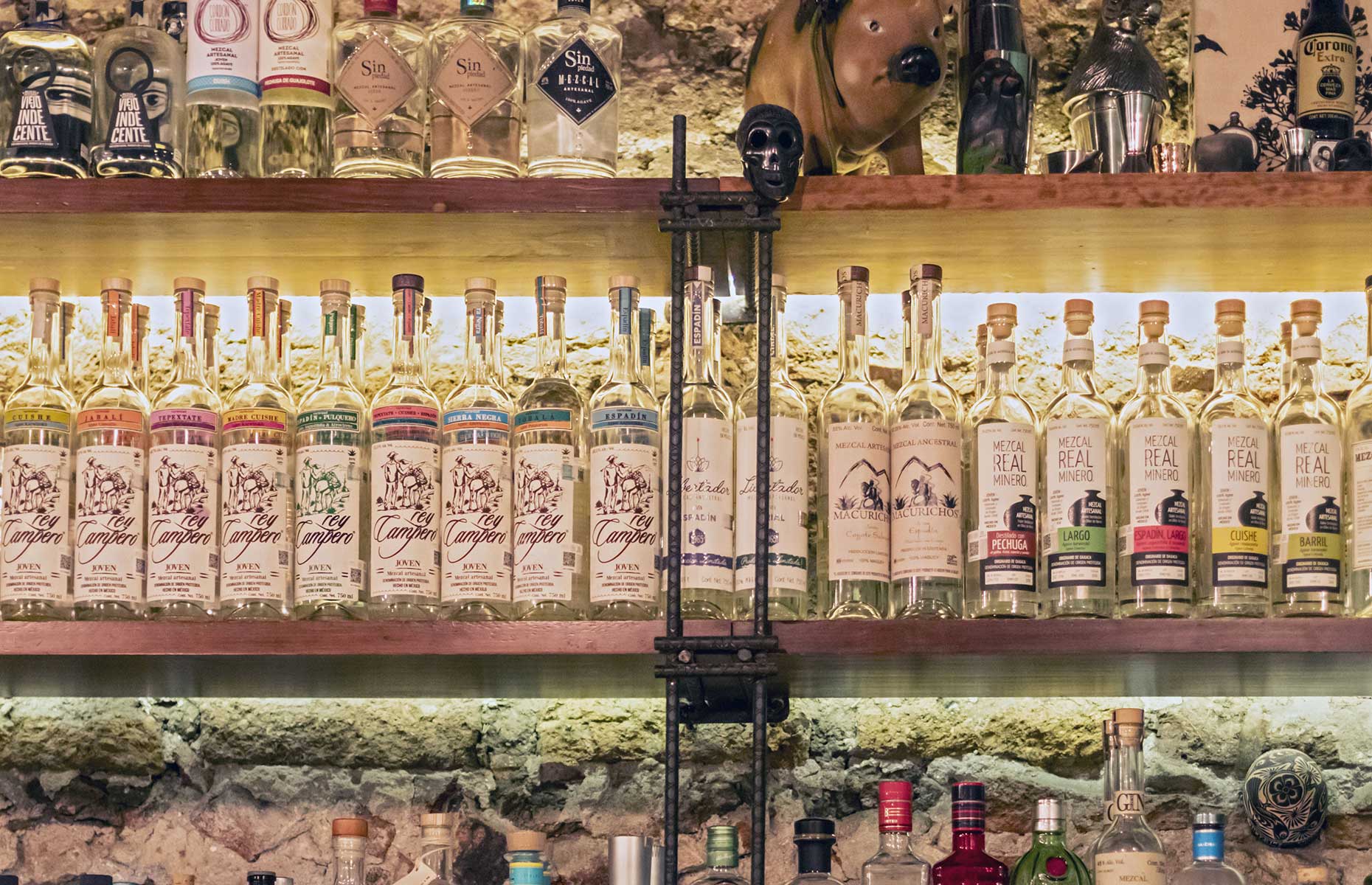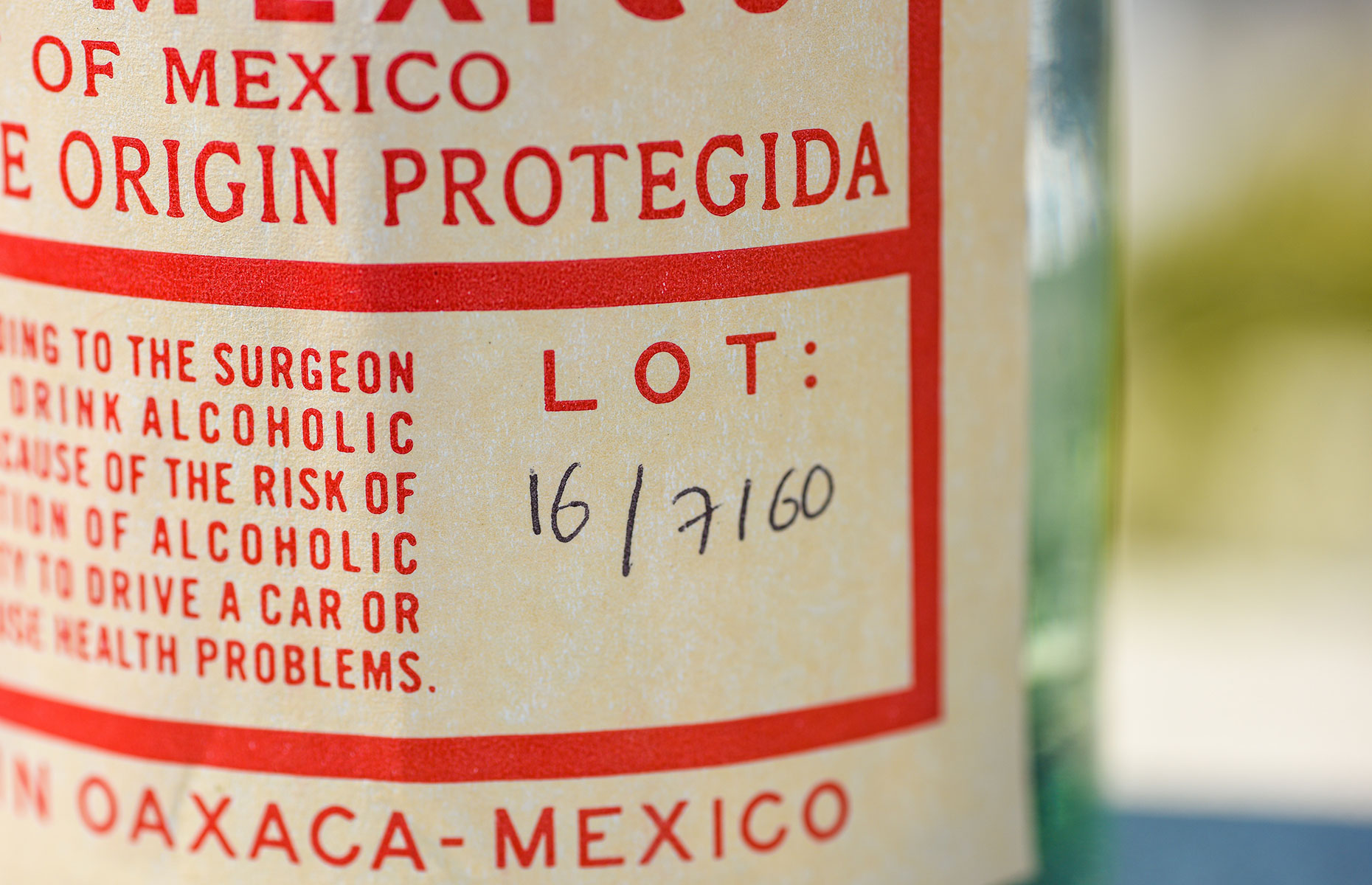Like tequila, mezcal is made in Mexico and distilled from the agave plant – and that’s where the similarities end. We discover what makes this spirit unique, how to taste it and where to buy it.
Sections
Why mezcal?
It’s said in Mexico that ‘you don’t find mezcal, it finds you’.
And anyone who has ever woken up with a tequila hangover will no doubt wish its smoother and more complex Mexican cousin mezcal sought them out significantly sooner.
In recent years mezcal has built an audience beyond Mexico thanks to dedicated bars popping up worldwide and increasing exports to the UK, America, Australia and Germany.

The mezcal movement isn't anything new. It's been produced in Mexico using the same traditional methods since the 16th century. There is also evidence from recent studies that distillation was taking place in Mexico between 1500 and 1000 BC – at least 3,500 years before mezcal was embraced by hipster hangouts in London's Soho.
Created from the agave plant and now highly regulated, mezcal was awarded Appellation of Origin (DO) status in 1994. Production is limited to nine Mexican states, with Oaxaca on the Pacific coast generating around 90% of the 7.1 million litres of mezcal made in 2020.
When compared to the 374 million litres of tequila churned out during 2020, output of mezcal is tiny, with the small-batch production methods ensuring its status as a crafted drink.
Many mezcal palenques (distilleries) are family-run businesses and the knowledge of the mezcalero is passed down the generations.

But it's not just the current focus on all things artisanal and the shunning of mega distilleries that has pushed this drink from fringe to fore.
Mezcal's flavour range runs from crisp verdant aromatics to deep smoky notes, making it perfect for using in cocktails or sipping by itself.
“Nine times out of 10 when I say to people 'tequila', they think of their university days doing shots and being hungover. But if you drink proper mezcal, it is, in my opinion, one of the best experiences you can have with spirits,” explains Eduardo Gomez, a mezcal specialist and owner of MexGrocer. “You're distilling pure energy from Mother Earth, which is why drinking mezcal gives you energy. Mezcal doesn’t get you drunk, it gets you high.”
Cheers to that.
READ MORE: What is wasabi and how to use it
Mezcal v tequila: what’s the difference?
Tequila and mezcal, along with bacanora, sikua and raicilla, are all spirits made from harvesting, fermenting and distilling the agave, or maguey plant. The key points of difference between all these drinks are in the varieties of agave used and the manufacturing process.
As with winemaking, the nuances of taste between mezcals are down to the differences in the soil, altitude and the climate where the agave plant is growing.
More closely related to the lily and asparagus family than cacti, there are around 150 different types of agave grown in Mexico.
Tequila is usually made using just one agave plant, the blue weber (agave tequilana), pictured below, and is mainly produced in Jalisco and four other Mexican states.
Mezcal is produced in nine states using more than 50 varieties of agave. The most commonly used is agave espadin (Agave angustifolia), which has long fleshy leaves.
READ MORE: Everything you've ever wanted to know about wine
How mezcal is made
There are four stages to mezcal production:
1. Harvesting
Growing agave is a slow process.
The blue weber plants used in tequila are harvested after five to seven years, while the espadins used in mezcal need at least seven years of growth, but can take nine. Wild agaves can take up to 30 years to reach maturity.
Once the agave is ready a flower called a quiote forms in the centre of the plant, which means it has the optimum sugar concentration for mezcal.
Harvesting is by hand with machetes or a sharp hoe called a coa de jima, and harvesters are known as jimadors.
After harvesting the leaves are stripped down to the heart or piña. They are huge, weighing anything from 7st 12lb (50kg) to 31st 6lb (200kg) each. The leaves are left in the fields as compost.
“The difference between tequila and mezcal harvesting is that for tequila the leaves are stripped right to the edge, they don’t leave any green. For mezcal they leave a tiny piece of the leaf,” says Eduardo.
2. Cooking
It's this part of the process that gives mezcal its name. In nahuatl – an Aztec language still spoken today by the Nahua people of Mexico – 'mezcal' is derived from 'mezcalli', which means boiled or baked.
Once at the palenque, the agave is cooked for around 10 days in an underground oven made with rocks and woods such as oak, which helps determine how smoky, or not, the finished drink is.
“A good distiller avoids a burned flavour by using the fibres from the previous distillation to protect the agave so they’re not in direct contact with the stones. Otherwise the agave burns and that gives you a horrible petroley, burned-rubber flavour,” says Eduardo.
The oven is covered with soil or banana leaves before cooking.
3. Milling
The agave is then crushed using a horse-drawn stone mill called a tahona.
Once the juices are extracted, both the juices and the agave fibres are fermented in wooden vats. There are no additives such as yeast or flavourings in the traditional method.
4. Distillation
The mezcal is then double distilled in copper pots, once to remove any harsh alcohol and a second time to perfect the flavours.
The smallest producers will use an old clay pot method, which creates a complex and artisanal mezcal.
Mezcal producers rarely have high-tech tools to measure alcohol by volume (ABV) and the quality control is typically done via tasting and sight.
The higher the ABV, the longer the bubbles last when the mezcal is shaken.
How to drink it
Unlike the advice in the infamous song by Terrorvision, ‘salt, lemon and lime time’ is best avoided whether you’re drinking tequila or mezcal.
Always sip rather than shoot your drink. “If you’re not used to drinking neat spirits I advise generating some saliva and give a tiny sip so it’s not too aggressive for your mouth,” recommends Eduardo.
READ MORE: Check out our pulled pork taco recipe
Buyers' guide
There are three classifications of mezcal to look out for.
Ancestral: this mezcal is distilled using small 100-litre clay pots. However, as the production levels are tiny, it’s very expensive. You can find some in the UK, but expect to pay £80 or more a bottle.
Artisanal: this means small copper stills are used in the production.
Industrial: the modern method, with huge stainless-steel stills known as autoclaves and mostly used by big brands.
Top recommendations
Ojo de Dios, 42% ABV, £42.12
Made in Oaxaca by Franciso Ortiz, a third-generation master producer of mezcal, the agave hearts are cooked for 10 days in an underground oven. The result is a smooth and subtly smoky mezcal with notes of grapes and leather. The dry finish is followed by a feeling of warmth.
Mezcales de Leyenda Durango, 47% ABV £59.88
Durango, in the north of Mexico, is where this leathery yet peachy mezcal is made, around 5,577 feet (1,700m) above sea level. The agaves are cooked in a pit with three woods: oak, mesquite and acacia, all native to the area. Additionally the brand supports smaller producers and marginalised communities, and uses recycled glass, paper and wood packaging.
Mezcales de Leyenda Guerrero 45% ABV, £59.88
Produced in the Sierra Madre mountains of Guerrero state, further north on Mexico’s Pacific coast than neighbouring Oaxaca, this mezcal is made with the cupreata agave plant. The agaves are cooked for five days in a lava rock-lined pit fired by oak. It has a low-smoke finish and notes of pepper and orange.
Cocktail recipe: Smoky picante margarita
This Mexican cocktail makes use of mezcal rather than tequila and below is a rough guide to the quantities. You can play around with the measurements and if it’s Friday night don’t be afraid to go for non-standard measures of 30 to 50ml of mezcal.
If you don’t like your cocktails too sweet, aim for 15ml of agave syrup, but you can use up to 25ml comfortably too.
Top tip: Tajin, a Mexican seasoning of chilli, salt and lime, also pairs well with fruit or as a seasoning for chicken.
Ingredients:
- 25 ml mezcal (we like Ojo de Dios)
- 15 ml agave syrup
- 25 ml fresh lime juice (usually one full lime)
- 1 drop of el Yucateco hot sauce
- Sprinkle of Tajin
- 1 chilli (optional)
Method
-
Add all the ingredients into a cocktail shaker (or if you don’t have one, a plastic food container works).
-
Add enough ice to comfortably fill an old fashioned glass.
-
Run your leftover lime around the rim of an old fashioned glass.
-
Shake out some Tajin onto a plate and roll the lime-rimmed glass into it.
-
Fine strain the contents of your shaker into the glass. Serve with a lime wedge or a chilli.
More information
MexGrocer has teamed up with our friends at The Tonic Magazine, a new biannual magazine with a focus on drink and travel.
A special 10% discount is offered to loveFOOD readers on both individual and subscription options. RRP is £15 per volume or £26 for an annual subscription (2 volumes). The next volume is expected in August so subscribe now.
Simply use the discount code LOVE10 on check-out to redeem your discount which for a limited time also includes free worldwide standard shipping.
Main image: Edgar Xolot/Shutterstock